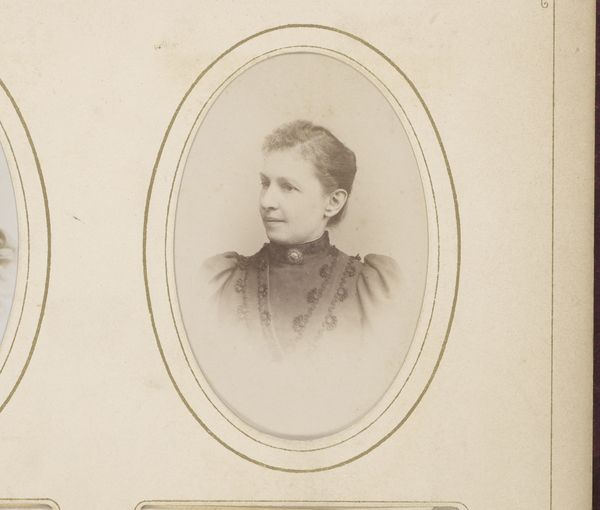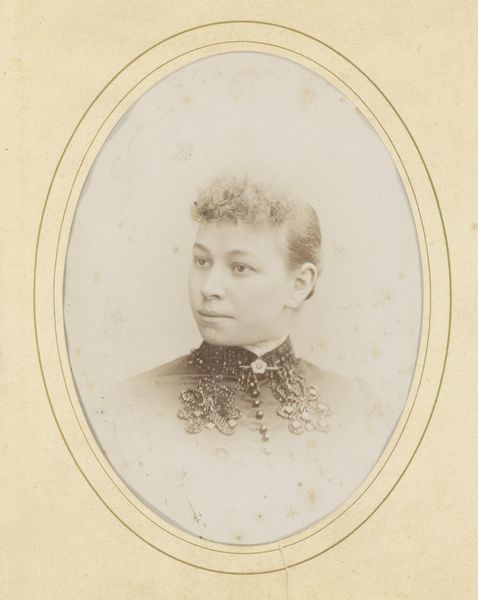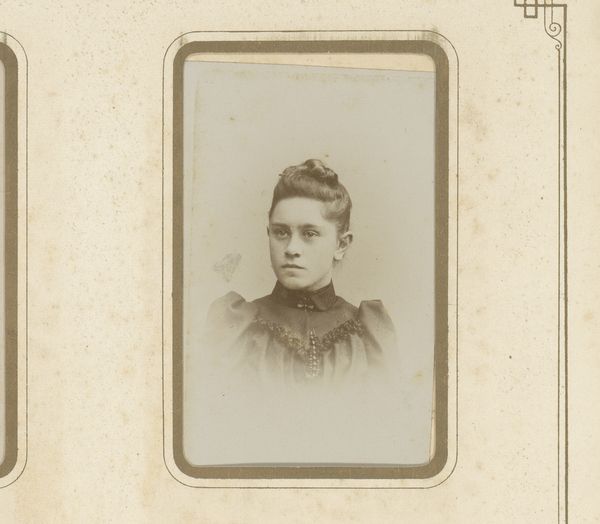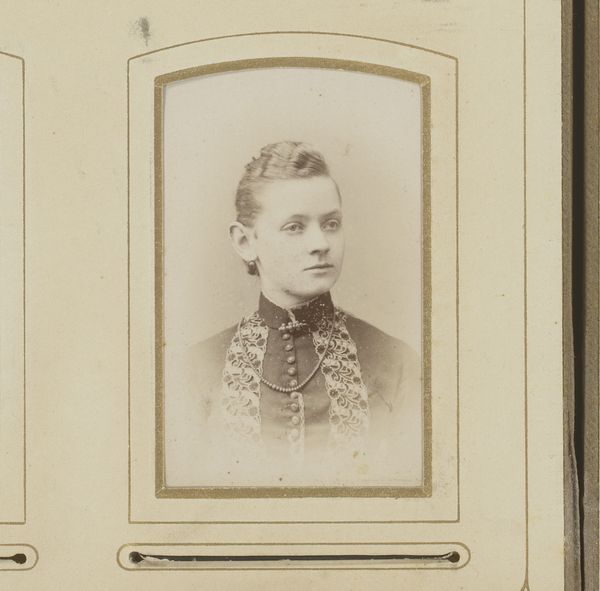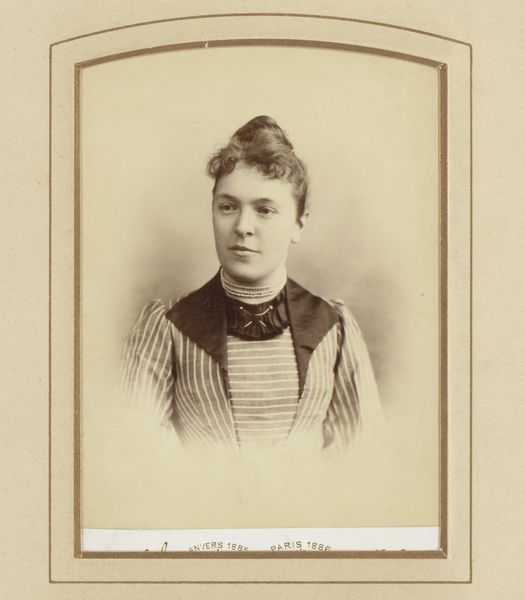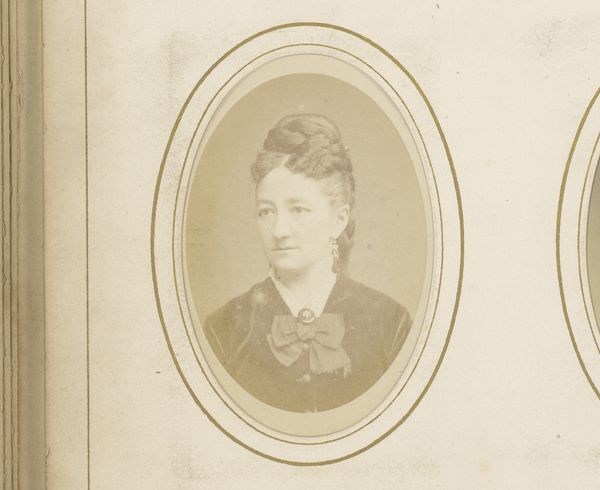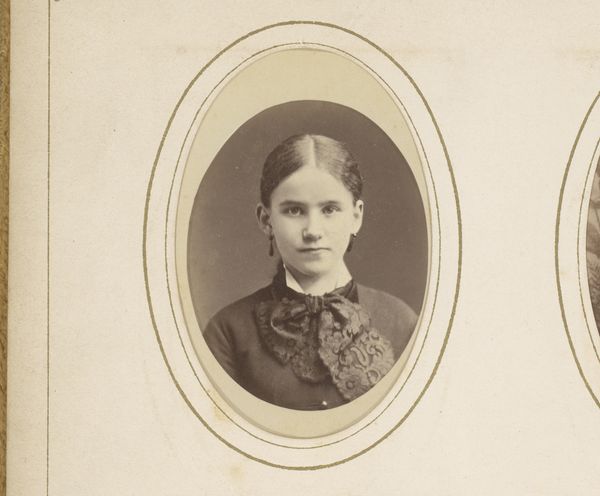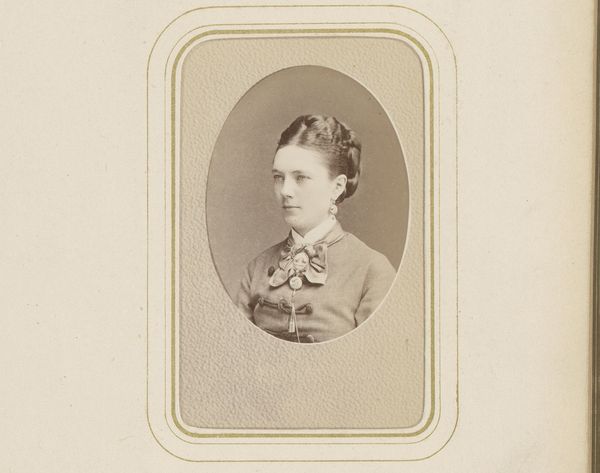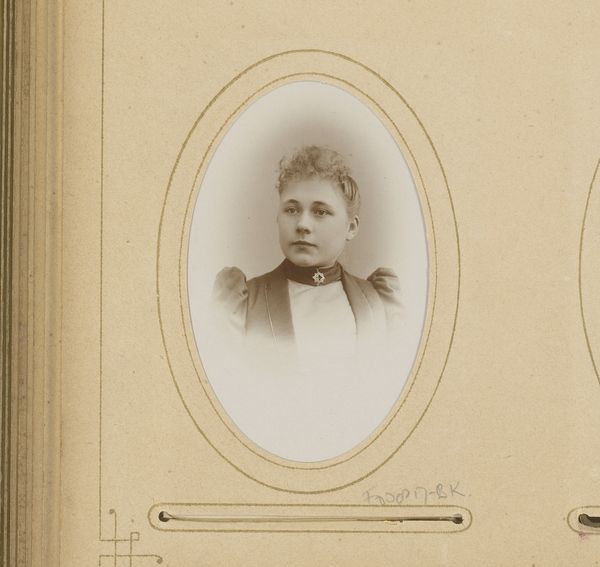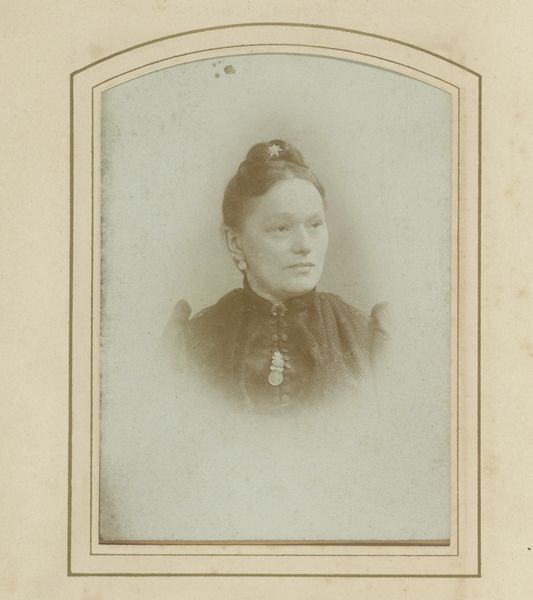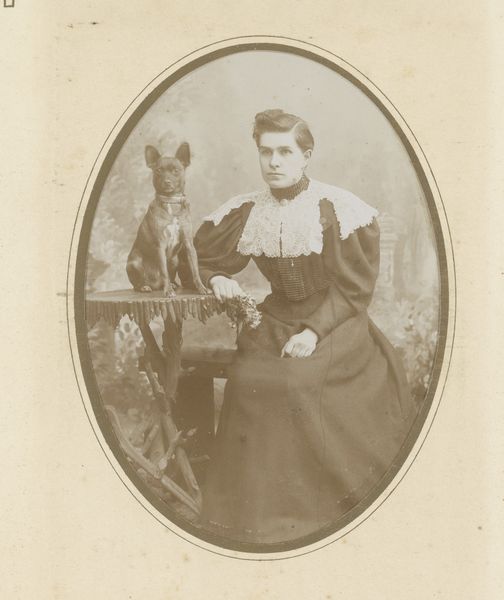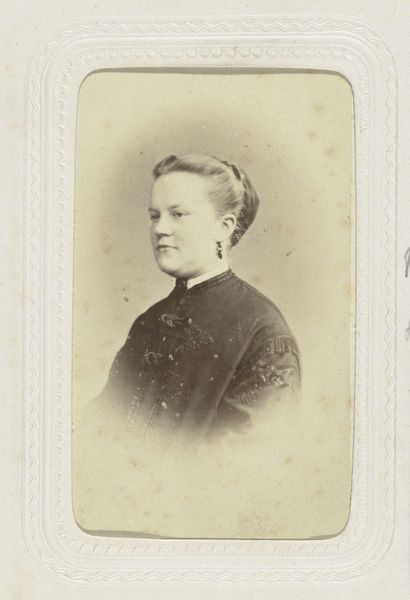
photography
#
portrait
#
16_19th-century
#
photography
#
historical photography
#
19th century
Dimensions: height 82 mm, width 52 mm
Copyright: Rijks Museum: Open Domain
Curator: Here we have "Portret van een jonge vrouw," which translates to "Portrait of a Young Woman," taken sometime between 1874 and 1891. It is believed to be the work of J. Ganz. What do you notice first about it? Editor: It's the severe tonality that grips me immediately; the somberness accentuated by that high-collared velvet jacket and the tightly coiled hair. There's such an emphasis on containment, on the discipline of form. Curator: Indeed. The photograph belongs to a period where portraiture, influenced by developments in photographic technology, became accessible to a wider segment of society. This portrait is more than just a likeness; it’s a deliberate presentation of self within societal constraints. It would have served a very particular social function. Editor: That tight, oval frame just amplifies the controlled effect! You can sense how carefully composed every element is. Even the slight tonal gradations work within a very narrow range—it’s a masterclass in using limited means to achieve an aesthetic end. It also seems that photography, while allowing access to the depiction of wider range of subjects, remained within certain aesthetic dictates such as classical compositions. Curator: Yes, the rise of photography in the 19th century brought a democratic shift to portraiture but also sparked intense debates about photography’s role within established art historical paradigms and institutions. We see individuals and institutions using photographic portraiture in ways that both mirrored and challenged conventional norms. These are carefully calibrated social and aesthetic performances. Editor: So much implied rigidity within such a soft, diffused image. Look how the light renders her skin almost translucent, almost idealized, which paradoxically amplifies the tangible sense of this as a crafted representation and a window into a social history of image production. The photograph’s focus becomes itself and not so much what it portraits! Curator: I completely concur. Ultimately, examining images like these gives us insight not only to the life of a young woman, but into the historical framework shaping social perceptions of self and womanhood at the time. Editor: Precisely. The artist compels us to appreciate form itself and how social perceptions become internalized artistic approaches, so to speak. It is truly stunning work.
Comments
No comments
Be the first to comment and join the conversation on the ultimate creative platform.

